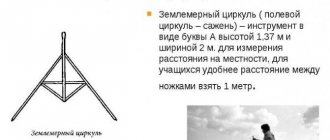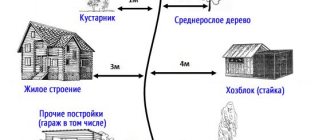Legislative regulation of the issue
The main points concerning this issue are defined in:
- The Constitution of the Russian Federation, which established the right of citizens to private property, as well as the possibility of common use of land.
- Provisions of the Town Planning Code of the Russian Federation.
- Federal Law on the State Cadastre of Real Estate, which established the procedure for registering real estate and its rights holders in the Unified State Register of Real Estate, as well as issuing a title document.
- SanPiN and SNiP regulations concerning low-rise buildings.
- The Land Code and the Civil Code of the Russian Federation, which determined the types of such lands and the procedure for concluding transactions for the transfer of rights to plots from one person to another (purchase, lease, etc.). They also established the features of the common and shared forms of land ownership.
- Order of the Ministry of Economic Development on the procedure for recording ownerless real estate. Its provisions determined how municipally owned land can be appropriated.
Rent or transfer of ownership of adjacent lands is carried out in accordance with an agreement with local governments.
An applicant may be refused if:
- If engineering and communication lines are installed in this area.
- When the registration of ownership of a person will reduce the size of the public area less than that established by law: the width of local and main streets should not be less than 15 and 40 m, respectively.
- If the land has special historical and cultural significance.
- When an allotment can become the property of several persons at once who cannot reach agreement.
Renting the area adjacent to the house
In 2021, the adjacent territory to a private house can not only be registered as property, but also leased from the state.
To do this you need:
- Apply for a plot of land to rent by going to your local municipality.
- Having received an approval, enter into an agreement with local authorities to lease the land. Use of the plot involves the monthly payment by the tenant of a certain amount to the state treasury.
The municipality does not always give the go-ahead for renting a plot of land. In some situations, an applicant may be refused:
- if there are important communications on the adjacent land;
- if the lease of the territory will significantly reduce the width of the street space;
- if the land has historical and/or cultural significance for the city/settlement;
- if other citizens apply for the plot.
Definition of concepts
With regard to private houses, the legislation has not determined what is considered a local area.
More often than not, everyone understands this as a plot of land that the owner of a private house needs to maintain it .
He can be :
- The property of the person who owns the house.
- No specific copyright holder.
- Rented.
Regardless of the form of ownership, a fence can be erected . It turns out that:
- The adjacent territory is a piece of land owned and used by the owner of a private house. It is located inside the fence and is needed by the owner to maintain his property and run the household inside the site. He must keep an eye on her.
- The land behind the fence may be no man's land. But in most cases it is owned by the municipality. It can be owned by several citizens at the same time. Cleanliness and order in such an area is maintained by the municipality.
The territory adjacent to the fence can be used by persons who have been able to present sufficient grounds to obtain possession (easement) and use of this area. For example, a significant reason may be the need of the owner of a private house for vehicles to leave and enter the garage, to transport cargo - without this land it will be impossible to move. Evidence must be documented.
In this case, several citizens can be . For example, owners of houses whose gates and fences are located on common land. Or neighbors of a private house owned by two persons at once.
The range of users is limited only by a specific situation. It will not be possible to block off this area without violating the common law of neighbors.
Responsibility and fines for violation of landscaping
We found out who should clean the adjacent territory - the owners or persons representing them. What will happen if you do not comply with the instructions of the authorities and refuse to clean and maintain public places? After all, in fact, these are municipal lands, which means the authorities must monitor them at the expense of the budget.
Many people think this way, but this opinion is wrong. The authorities really need to keep order locally, including on the streets. And at whose expense is a moot point. Moreover, federal laws directly stipulate that the owners of adjacent territories must take a financial part in their cleaning. If you want to live in a private house, buy a lawn mower, a shovel and go ahead – improve your plot and everything around it.
But no one has the right to immediately fine the owner for non-compliance with the rules of landscaping without an appropriate order. First there must be an act of warning - an order (decree, presentation, decision), and if there is no reaction - then a physical fine. individuals up to 500 rubles, and organizations up to 20 thousand rubles (Article 19.5 of the Administrative Code). However, paying a fine does not relieve you from the obligation to clean the adjacent territory.
So, ownership of land and real estate is not only rights, but also responsibilities, and the range of these responsibilities can be much wider than we imagine. But there is no need to criticize the legislation. We must consciously approach public property, because it is much more pleasant to see clean streets around us, and to understand that each of us makes our own contribution to this cleanliness. It is better not to seek instructions, but to do everything on time.
Setting dimensions
When determining the size of the allotment, you need to:
- Prepare a natural boundary plan, indicating on it all the objects that will be used by the owner of a private house.
- Indicate in the plan the area located behind the fence. It is municipal property and cannot be appropriated. In this case, it is necessary to take into account the differences between private houses adjacent to each other, as well as the internal needs of their owners.
- Discuss with neighbors in the area whether such division violates their rights. Based on this, develop a common solution that would suit everyone and avoid resolving the land dispute in court.
- Having done all this, you can submit an application to the municipal authorities to register rights to the local area. If changes need to be made to the original plan, this will need to be discussed again with the other home owners.
If the area adjacent to a private house does not have an owner, then the owner of the premises can submit an application and evidence that it is ownerless. Local authorities are given 18 days to review. If the fact of the owner’s absence was confirmed during the document check, the land is registered.
No standards have been established regarding the local area for private sector housing. The square footage of land plots (PL) adjacent to the house, in this case, depends on the territory that was rented or privatized . Plus, other factors are taken into account :
- Characteristics of buildings.
- Neighbors' requirements for maintaining freedom of transport and utility lines (this applies to parking spaces, driveways, etc.).
- Landscaping.
- The number of people living near this site.
The territory both behind the fence and inside the fence must be indicated in the technical passport of the residential building and the house management plan. Also, evidence of rights to such plots is available in an extract from the Unified State Register or in the land purchase agreement registered with the BTI (if the land was purchased before 1998). These documents indicate that the building and land plot are owned, and also indicate the size of the territory around the house owned by the citizen.
Land surveying procedure
The Law on the State Cadastre of Real Estate states that the revision and expansion of the land plot must be carried out in the following order:
- First, it is necessary to agree on the procedure with all citizens interested in this procedure. This can be achieved either during a general meeting of citizens interested in carrying out the land surveying procedure, or as a result of a personal agreement with a specific person. Notice of the date of the survey meeting must be sent at least one month before the scheduled date.
- Anyone who was absent from the general meeting will be considered aware of the meeting. If someone does not indicate their agreement or disagreement (in writing, indicating the reason for the decision), then the results of the negotiations are considered agreed upon by all interested parties.
- A record of the results of the meeting is made in the land surveying act. If after the procedure no objections arise, the initiator submits the request to the accounting authorities. However, disputes with neighbors may arise even after the boundaries have been determined and the relevant information has been entered into the register.
Fencing installation
The owner has the right to independently select a suitable fence, focusing only on his own capabilities and goals.
It allows you to separate private property from municipal property. Installation of a fence will also require coordination with neighbors , as well as:
- Bodies responsible for the state system of architectural and construction supervision.
- With the main unit of the Ministry of Emergency Situations in the region.
The departments of construction and architecture, as well as property management, will require photographs of the property and documents containing basic information about the house, site and fence from the owner of the fence.
Without the consent of neighbors and authorities, a fence built is considered an unauthorized construction. If violations are discovered during the construction of the fence, the case may go to court. He may decide on complete or partial dismantling.
A fence or other fencing must be installed taking into account the boundaries recorded in the title documentation for the house and land. Such structures make it possible to secure real estate and clearly delineate private territory.
Examples of arrangement and fencing of adjacent areas in private residential buildings are presented in the following video:
The legislative framework states that the definition of “adjacent territory of a private house” in documentary form and with the corresponding calculations does not exist in the laws.
This phrase denotes a plot of land near a specific private housing construction that the owner himself needs. He needs such a territory to maintain his personal real estate and freely run his household.
The homeowner can rent this plot, obtain private ownership rights to it, or the plot can be in homeless use. On the border of this territory, you can, for example, install a fence or fencing, store firewood, etc.
Thus, the inner part of the land of the owner of a private house, fenced off by a fence, is also included in his property. The territory located on the outside of the fence is not considered the property of the homeowner and is most often municipal or, in rare cases, no one's.
The use of the area located near the fence is claimed by those persons who are able to document and prove their right to ownership (for example, to move a car to a garage or transport various cargoes).
One of the features of owning such a plot is the possibility of it being owned by several people at once.
Documents and legislation
To determine the footage of a local area, at the legal level there is a whole list of documents, according to which this area is defined as a local area.
Information to determine the plot itself, its size and possible rights to it may be contained in:
- Constitution;
- Land and Civil Codes;
- SNiPakh;
- SanPiN;
- Law “On the State Real Estate Cadastre”;
- Technical passport and plan of the house and land plot for it.
The calculation of the adjacent plot of land is carried out according to a formula that includes such parameters as the total area of the premises of the entire house (Sr) and the specific indicator of part of the land plot (Ypz), which is calculated according to SNiPs. The data for its calculation is taken exactly at the time of construction of the house.
Sn=Sr*Ypz
This calculation formula is suitable for land plots located around apartment buildings. For the private sector, there is no norm for such a territory and no calculation of the number of possible meters of adjacent territory.
To determine the size of such a plot of private housing construction territory (leased or owned), it is necessary:
- Drawing up a plan with the boundaries of the territory, with all existing buildings;
- Designation on this plan of the footage of the local area, which is in city ownership;
- Negotiating with owners of neighboring private households whose rights may be affected and searching for a common mutually beneficial solution;
- Applying to local government authorities to legally secure the rights to own a given local area.
The land adjacent to the fence can be made your own or rented.
To document such rights and legally register the plot, it is necessary to have entries in the certificate of ownership or the real estate purchase and sale agreement registered with the BTI (if the purchase took place before 1998).
Answers to questions on the topic
What distance from the fence is the adjacent territory?
When drawing up a land plot plan, the area owned by the citizen is taken into account . The adjacent territory is considered to be a distance of 1.5 m from the outer part of the fence. It is this distance that is considered the local area.
Whose responsibility is it to clean the surrounding area?
If the territory is the property of the municipality, then it must clean up the territory. If the owner has registered the adjacent area as his own or leased it from local authorities, then he must clean up this area.
Landscaping the area adjacent to the house involves performing a number of activities:
Can I make a low fence four meters from the gate?
If the area where you want to put a fence is not within the boundaries of your site, then it will be prohibited to make a fence, since this will already be self-occupation.
For unauthorized use of a land plot owned by a municipality or that is ownerless, liability is provided (according to Article 7.1 of the Code of Administrative Offenses of the Russian Federation) in the form of a fine in the amount of 1 to 1.5% of the cadastral value of the plot, but not less than 5 thousand rubles.
The territory adjacent to a private house can be either the property of the municipality or the owner of the house, or it may be completely owned by no one.
If the owner of the house wants to register an ownerless plot for himself, then he needs to contact the municipality . The same action must be performed if he wants to buy the plot from the state or lease it. It should be remembered that a prerequisite for using the adjacent territory is caring for it.
Rules for delimiting territory
The federal law, which establishes the boundaries of private plots, provides for mandatory agreement with persons who are interested in redistributing this plot at a general meeting (notification of such a meeting is given no later than 1 month before the meeting itself).
Persons who refused to attend the general meeting, but who received the appropriate notification in due time and did not express their attitude to the upcoming land survey in writing, are considered as agreeing with such land survey (noted in a special act).
After the approval procedures have been carried out with all interested parties and the relevant notice has been issued to them, the person interested in the delimitation is obliged to register this site for cadastral registration.
However, even such a sequence of actions and strict adherence to the law does not exclude possible disputes about how many meters and what part of the local area of a private house has become the property or lease of the homeowner.
Right to rent
The adjacent territory of a private house can be leased by the owner in accordance with the procedure established by the Land Code.
To do this, the owner of private housing construction must contact the local government with the necessary application for the right to such a lease and obtain the relevant documents, which will establish the size of this territory, the number of meters and the established rent.
It is worth considering that if there are important communications passing through this territory, in the event of a decrease in street space during the transfer of ownership, location on a historical or cultural site, as well as the location of the site in the ownership of other homeowners, this may become grounds for refusal to award rental rights or property rights.
Considering that the size of the land plot adjacent to the housing construction is not determined by law, it can be determined independently from the documents on the ownership of a private house.
The area and number of meters around the house are fixed in the cadastral passport. After the privatization procedure is completed, not only the fact of ownership of the building is entered into it, but also how many meters around the house belong to the owner, indicating the geometry of this site.
Local administrative authorities quite often impose on homeowners the obligation to maintain proper appearance and monitor cleanliness and the fence on the outside of an area that is not legally the local area of a private house, but which may become so by appropriate resolution of municipal authorities.
Typically, a distance of 1-1.5 meters is accepted by municipal authorities as a home area, the cleanliness and order of which must be ensured by the owner.
The question of how many meters the size of a plot of land adjacent to private housing construction can be should be answered based on what kind of territory is meant: behind the fence or inside the fence.
The territory that is located on the inside of the fence around the house itself is determined according to the cadastral passport, and that which is located on the outside is municipal property. Based on the needs of the homeowner, the boundaries of this territory can be expanded in the manner prescribed by law.
Many owners of private houses are interested in issues related to the local area.
Does it need to be looked after, how and what can it be used for, and where are its boundaries?
How many meters of local area in the private sector? Let's look at all this below.
Dear readers! Our articles talk about typical ways to resolve legal issues, but each case is unique. If you want to find out how to solve your particular problem, please use the online consultant form on the right or call. It's fast and free!
Responsibilities in relation to the territory behind the fence of a private house
The boundary plan of a land plot tells us where its boundaries are documented. On the ground, these boundaries are marked by a fence. It is the fence that shows us where private property ends.
Owners of individual residential and garden houses must monitor not only what and how they build and place on their site, but also the adjacent territory to the fence of a private house. This is expressly required by federal laws.
The territory behind the fence of a private house is an adjacent territory, the boundaries of which are determined by the rules of landscaping adopted in the municipality.
The Civil and Town Planning Codes contain instructions on the financial participation of owners and putting the surrounding area in order.
What this means and exactly how to monitor the territory before the fence of a private house is already determined by the local administration in its by-laws.
It turns out that the owner is obliged to monitor the adjacent territory behind the fence of a private house, despite the fact that this territory does not belong to him at all, but is the legal property of the municipality. Moreover, local authorities are authorized to issue orders and fines for non-compliance with landscaping rules.
The territory behind the fence of a private house - typical generally accepted responsibilities
Let us note the most common responsibilities imposed by local authorities on private owners when caring for the adjacent territory:
- mow the grass;
- maintain cleanliness;
- remove snow;
- keep the ground covering in order.
In addition to these general rules, in a particular subject or administrative entity it may be established that there must be flower beds or a certain type of shrubs behind the fence. For example, in the Moscow region, private owners, among other things, are required to fight the poisonous plant - hogweed; they are also not allowed to store imported building materials, sand, crushed stone, peat, fertilizers, etc. outside the fence for more than seven days.
In order to find out how far from the fence landscaping obligations apply, read our article: “At what distance should the area behind the fence be kept clean?”
For failure to comply with the rules of improvement, homeowners bear administrative responsibility in accordance with the Code of Administrative Offenses of the Russian Federation.
Ignorance of the law is not an excuse. Even the territory behind the fence of a private house, which does not belong to you by right of ownership, may become the object of financial investments and expenses - you need to think about this in advance and find out your rights and obligations in relation to the adjacent territory from local acts and decisions of authorities, so as not to become random intruder.
Basic Concepts
The adjacent territory is a plot of land that borders a building and is used by the owner of the building to meet his needs.
In the legislation of the Russian Federation there is no precise definition of the local area of a private house. Usually it refers to a part of the land near the yard of the house owner, which he needs to maintain his plot.
Mostly, owners of private houses completely enclose their property with a fence. It is a mistake to believe that the territory behind the fence has no owner. This land belongs to the municipality. In order to obtain the right to use this land in their own interests or dispose of it, the owner of a private house must justify his easement.
All legal issues are regulated by the Constitution of the Russian Federation, the Civil Code, the Land Code, the Law “On the State Real Estate Cadastre”, cadastral and technical documents for land.
What is the adjacent area to the house?
There is no such clear definition in the laws of the Russian Federation as the adjacent territory of a private house.
But by it we mean that this is a plot of land that is located near a private housing construction, which the owner of the house can use, has the right to register as ownership, care for, etc.
Many owners are faced with the problem of maintaining such a territory; they do not know how many meters of adjacent territory to a private house behind a fence can be privatized, or how to properly manage and care for this land.
Procedure for marking boundaries
To determine the clear boundaries of the local area of a private house, first of all, look at the cadastral passport of the land plot. After privatization, it must indicate not only the boundaries of the private property itself, but also the adjacent area that belongs to it.
REFERENCE: According to the laws of the Russian Federation, a citizen can become a participant in privatization only once.
For residents of the private sector, there is no exact number of meters that the local area can occupy. In each specific case, the size of the local area of a private house may differ. To determine the boundaries of the territory that applies specifically to your private home, you need to consider the following points:
- draw a plan diagram of the site and indicate on it all the objects necessary for the use of a private house.
- Mark on your plan diagram the municipal part of the land that is adjacent to your property.
- Coordinate all controversial issues with the owners of neighboring plots claiming to use this territory.
- Provide documents to the Authorized State Bodies to establish the rights to use and own the local area.
REFERENCE A plot of land adjacent to the fence of a private property can be registered as a property or leased.
Next we will talk about what can be considered a local area, how many meters from a private house?
Adjacent territory to the MKD
The boundaries of the local area are determined by legislation, as well as regulations . The state cadastral registration indicates the limits of the land territory of an apartment building. This may include various objects, playgrounds, roads, landscaping areas, garages, parking lots, etc.
Many residents do not know what specific boundaries of the local area are established by law. When determining the size of the adjacent territory to an apartment building, you need to proceed from the size of the project site allocated within the boundaries for construction.
To find out the size of the territory, you should contact the state cadastral engineer, who can issue a special extract. The specialist must provide citizens with documents on the land and its owner.
There are 2 options possible:
- The territory adjacent to a private house belongs to the municipality, but owners of apartments in apartment buildings can use it.
- Some owners may purchase part of the land plot, which is considered adjacent territory.
Standards and regulations for the local area of a private house - how many meters from the house?
The legislation of the Russian Federation does not provide for any specific standards and norms that are the same for all homeowners. Each region has the right to independently determine for itself the basic standards in force for the local area.
How many meters from the house is considered the local area of a private house? In most cases, the local area of a private house occupies approximately 1.5 - 2 meters from the fence.
Let's consider the main responsibilities of private homeowners in relation to the land behind their fence. Regardless of whether you are the owner or tenant of such territory or not, municipal authorities assign the following responsibilities to you:
- regular cleaning of the area behind your fence from debris (in the fall - from leaves, in winter - from snow);
- ensuring the safety of underground communications;
- ensuring unhindered access to various emergency services - fire, ambulance, emergency water and gas.
There are many options for using the local area: you can organize a beautiful lawn, arrange a convenient entrance for a car, or install a swing for children. However, there are some restrictions on the use of such a site. The municipality prohibits:
- install poles, signs, fences and other structures without permission;
- burn garbage;
- litter with building materials and other items.
Surveying
Land surveying is a set of works aimed at establishing the exact boundaries of a land plot and further legal registration of the results of this work. Landmarking of the local area is carried out in the following cases:
- to purchase the site from the administration and register it as property;
- to register a lease for a plot;
- when controversial issues arise between neighbors.
The surveying procedure includes the following steps:
- agree with all interested owners on the boundaries of the site. It is better to formalize such an agreement in writing, since during the land surveying process one of the neighbors may change their opinion.
- A meeting must be held to discuss and make a common decision. Each participant must be notified of its location and time 30 days before the meeting itself.
- In the absence of one of the participants who had information about the meeting, the survey will be considered agreed upon.
- Direct surveying is carried out by specialists before the meeting.
The act of approving the boundaries of a land plot.
If there are no legal grounds for refusal, the owner of a private house can become the owner or tenant of his local area. To do this, you need to collect the necessary documents and contact the local administration. We must not forget that maintaining cleanliness and order behind the fence is your responsibility.
There is no specific and clear definition for the concept of local area in the current legislation of the Russian Federation.
There are different versions of the interpretation of this term, but each of them is quite vague and, moreover, does not have an exhaustive character of presentation.
If we take a collective definition of the local area, then we can stop at the following: local area is the territory that is adjacent to the building and can be used at the discretion of the owner of the building. The specifics of such a territory should be considered.
Dear readers! Our articles talk about typical ways to resolve legal issues, but each case is unique.
If you want to find out how to solve your specific problem, please contact the online consultant form on the right. It's fast and free! Or call us at :
+7 Moscow, Moscow region
+7 St. Petersburg, Leningrad region
+8 Federal number (free call for all regions of Russia)!
How many meters from the house is considered the local area of a private house?
In relation to the so-called “private” house, it is difficult to find the concept of “adjacent territory of a private house”. Literally, the meaning of this phrase means a plot of land necessary for the owner of a particular house to maintain and maintain the latter.
Such a plot can be leased, act as property, or be in homeless use. According to the outline of this, you can install a fence or store firewood, as an option.
Thus, a plot of land (the very same adjacent territory), which has a fence in the form of a fence, is defined as “no man's land”, and in terms of its form of ownership it is municipal.
The legal authority to use such land belongs to persons who are capable, from a legal point of view, of giving a thorough explanation of their rights to own and use the said land.
As an example, the owner of a house needs such a territory to move his car out of the garage, drive through with cargo, or rather, he needs to move around this piece of land to ensure full use of the yard and house.
There can be a lot of similar reasons. However, it is worth noting that at the same time several interested parties can exercise this right with full rights, such as, for example, neighbors from two households on the same side.
Thus, land that is in common use must be located behind a fence and be available for unhindered use by other persons. Based on the above, blocking such an area means violating someone’s rights and freedoms.
Regulatory framework
In terms of the topic under discussion, this is:
- The Basic Law is the Constitution of the Russian Federation;
- Federal Law “On the State Cadastre of Real Estate”;
- Regulations on SNiP regarding low-rise construction;
- Civil Code of the Russian Federation;
- SanPiN of Russia;
- Land Code of Russia;
- Registration certificate for the house;
- Plan of the plot of land on which the private house is located.
The dimensions of such a local area should be calculated using the following formula: Sn=Sr*Уpz.
Sn is an indicator of the local area;
Sr is the area of premises in the house;
Уpz is a specific indicator of the share of a plot of land.
It is calculated per 1 m2 of living space. This indicator will be directly determined by the number of floors in the house, as well as the date of construction of the house.
However, we note that such a calculation applies only to areas adjacent to apartment buildings. Regarding the private sector, there are no rules for the local area. For this reason, the size of land plots is determined by the leased or own territory.
It is worth adhering to the following important conditions in order to determine the size of the land plot that can be used for yourself in the private sector:
- We draw up a plan of the natural boundaries of the territory, marking it with all the objects necessary for the use of a private house;
- Within the framework of the plan, we designate a section of the adjacent territory that is in municipal ownership and, accordingly, cannot be alienated;
- Talk to neighbors whose rights may be affected. Listen to their opinion in order to subsequently make a common mutual decision;
- Only after going through the previous stages, contact the local government authorities in order to secure the rights to own this adjacent plot. It is likely that adjustments will need to be made to the initial proposal.
How to apply?
This territory can actually be owned or rented.
So, to register such a territory, you should prepare:
- Documents evidencing state registration of rights to the house itself and the land plot (since 1998);
- Purchase and sale agreement with registration in the Bureau of Technical Inventory (period until 1998).
Provided that an individual has a desire to register the adjacent territory for use, he should contact the local government authorities.
According to the order of the Ministry of Economic Development of the Russian Federation dated November 22, 2013 No. 701, real estate in the form of a plot must be registered by decision of local government bodies.
All you need to do is draw up a corresponding application, as well as provide the documentation that would confirm that the object you are looking for is in a state of “ownerlessness.”
The fate of the site must be decided, in this case, after 188 days have passed, starting from the date of acceptance of your application.
Local government bodies are required to consider the application on its merits, after which, upon making an affirmative decision, information is entered into the Unified State Register, which indicates registration.
Procedure and rules for land surveying
Following the Federal Law “On the State Cadastre of Real Estate”, the determination of new boundaries of the territory of land plots is carried out with the obligatory approval of the full range of persons who have ownership rights to an adjacent plot of land.
Such a coordination process can be carried out in the form of a meeting of citizens interested in the issue of such land surveying.
However, it is worth remembering that the above-mentioned persons are notified in advance of such a meeting, which must take place at least 30 days before the land survey.
Citizens who are interested in holding a meeting, if they refuse to attend it, are considered notified of this event.
Provided that citizens, duly notified, have in no way expressed their opinion on the essence of the survey being carried out, this survey will be perceived as agreed with these citizens.
This fact is recorded as part of a special survey act. Following this recording, persons must be notified.
When the person who was invited to the meeting does not show up within a certain period of time, in this case, the initiator and the main interested citizen have the right to register a plot of the local area in the cadastre.
However, let us note that such actions cannot exclude controversial issues arising in the future among land survey neighbors.
Regarding rent
The lease is carried out in accordance with the provisions of the Land Code of the Russian Federation. It is worth contacting your local government to apply for the right to rent.
In accordance with the provisions of Article 65 of the Land Code of the Russian Federation, a fee may be charged for plots of land leased in amounts determined by the terms of this lease.
Such specified conditions come from the Government of Russia, as well as local authorities of the locality.
Reasons for possible refusal to register a lease or ownership:
- Significant communication lines are laid along the desired territory;
- The transfer of a plot of land into the possession of the owner will entail a change in the negative direction of the width of the street space by an indicator less than permissible (we denote that the width of the streets should not be less than 15 meters for local significance and 40 meters for the main value, respectively);
- When the location of the site takes place in an area of historical and cultural significance;
- Provided that other owners have property rights in relation to this plot of land, and their consent, accordingly, is absent.
Blog
Photo source: https://www.pexels.com/
In Vologda in November 2021, a protocol was drawn up on an administrative offense under Art. 3.1 of the Law of the Vologda Region “On Administrative Offenses” in relation to LLC Management Company “ZhKTs”, which, while managing house No. 51 on Sovetsky Prospekt, violated clauses 3.1, 3.6.1, 4.2.1 of the Rules for the improvement of the city of Vologda, namely, the grass was not mowed on the formed land plot of the house and the surrounding area.
By a resolution of the administrative commission in December of the same year, LLC Management Company “ZhKTs” was brought to administrative liability under Art. 3.1 of the Law of the Vologda Region “On Administrative Offences”, an administrative penalty was imposed in the form of a warning.
Without leaving the case like this, LLC Management Company “ZhKTs” appealed to the Vologda Regional Court with a demand to declare invalid from the moment the paragraphs came into force. "z" clause 3.6.1, clause 3.6.2, clause 3.6.3, 3.6.4 - in relation to clause "z" clause 3.6.1 of the Rules for the improvement of the Municipal Municipality "City of Vologda".
In order to discuss in detail, we present the part of the mentioned Landscaping Rules that interests us:
«3.6. Owners and (or) other legal owners
buildings, structures, structures, land plots (with the exception of owners and (or) other legal owners of premises in apartment buildings, the land plots under which are not formed or are formed along the boundaries of such houses) are
required to take part, including financially
, in the maintenance of adjacent territories
in the following cases and order
:
3.6.1. The outer part of the boundaries of the adjacent territory is determined at a distance of 15 meters along the perimeter from the boundaries of the building, structure, structure, land plot, with the exception of the following cases:
a) for free-standing non-stationary objects of trade, consumer services and services (including those located on public transport landing sites) - 10 meters around the perimeter;
b) for free-standing thermal, transformer, distribution substations, buildings and structures for engineering purposes - 5 meters around the perimeter;
c) for garage-construction cooperatives, gardening, dacha, gardening non-profit associations of citizens, parking lots, gas stations, gas filling stations, facilities for the sale, maintenance and repair of vehicles - 20 meters around the perimeter;
d) for railway transport lines of general and non-public use - 5 meters on each side of the railway, but not more than the boundaries of the security zone and the limits of the railway right-of-way;
e) for ground, above-ground networks and engineering support structures - 5 meters on each side of the networks and engineering support structures, but not more than the boundaries of the security zone of networks and engineering support structures;
f) for advertising structures - 5 meters along the perimeter (radius) of the base;
g) for sites for installing waste bins - 5 meters around the perimeter;
h) for apartment buildings - in accordance with subclause 3.6.2 of clause 3.6 of these Rules.
3.6.2.
The outer part of the boundaries of the adjacent territory for apartment buildings is determined within 15 meters around the perimeter from the boundaries of the land plot on which the house is located with elements of landscaping and landscaping, but not more than 15 meters from the boundaries of the house.
3.6.3. The outer part of the boundaries of adjacent territories , defined in accordance with subclauses 3.6.1, 3.6.2 of clause 3.6 of these Rules, is limited to the edge of the roadway of a public road closest to the building, structure, structure, land plot or the line of intersection with the outer part of the border of the adjacent territory defined in in accordance with these Rules.
When overlapping (intersecting) adjacent territories, the outer part of the border of adjacent territories is established at an equal distance from buildings, structures, structures, and land plots.
If the building, structure, structure, land plot, in respect of which the outer part of the border of the adjacent territory is determined, borders on a security, sanitary protection zone, a zone for the protection of cultural heritage objects and another zone established in accordance with the legislation of the Russian Federation, the outer part the boundaries of the adjacent territory of such a building, structure, structure, land plot should not cross the boundaries of the specified zones.
3.6.4.
Maintenance work in the surrounding area includes:
- mowing grass (the height of the grass cover should not exceed 15 cm);
- garbage collection;
- sanitary cutting down of emergency trees;
- daily sweeping in the spring and summer of pedestrian communications (including sidewalks, alleys, paths, paths), parking lots;
- snow removal, elimination of slipperiness in the autumn-winter period of pedestrian communications (including sidewalks, alleys, paths, paths), parking lots;
- painting small architectural forms (once a year in the spring-summer period);
- emptying bins and garbage containers of garbage as it accumulates.
».
The Vologda Regional Court and the Supreme Court of the Russian Federation rejected LLC Management Company "ZhKTs".
Let’s say right away that it didn’t make much sense to challenge just such a “set”, since subparagraphs 3.6.1. — 3.6.4. The improvement rules are specific in relation to clause 3.6, which precisely contains the provision that is the root cause of the entire dispute, not taken out of thin air...
The fact is that Federal Law No. 463-FZ dated December 29, 2017
“On amendments to the Federal Law “On General Principles of the Organization of Local Self-Government in the Russian Federation” and certain legislative acts of the Russian Federation”, Article 1 of the Town Planning Code of the Russian Federation (GrK RF) was supplemented with paragraphs 36 and 37 as follows:
«36) landscaping
— activities to implement a set of measures
established by the rules for improvement of the territory of a municipal formation
, aimed at ensuring and improving the comfort of living conditions for citizens, maintaining and improving the sanitary and aesthetic condition of the territory of a municipal formation, maintaining the territories of settlements and objects located in such territories,
including including public areas
, land plots, buildings, structures, structures,
adjacent territories
;”;
«37) adjacent territory
-
public
, which
is adjacent
to a building, structure, structure, land plot if
such a land plot is formed
, and
the boundaries of which are determined by the rules for improvement of the territory of the municipality
in accordance with the procedure established by the law of the constituent entity of the Russian Federation;
"
What can be noted about the content of these points?
Firstly
, the listing in clause 36 of the public territory (TOP) and the adjacent territory (AT) as
two independent concepts
.
Listing them separated by commas gives reason to believe that PT does not belong to the TOP, that it is something... The full version is available only to subscribers Login Subscribe
How many meters from the house is considered the local area of the apartment building?
In order to calculate the boundaries of the space belonging to your home in meters, you should take into account the following indicators:
- Availability of public roads;
- The level of density of adjacent buildings;
- Floors of the house.
Next, let's analyze the standard calculation formula.
So, the adjacent area of the apartment building - Snor, is the result of multiplying the size of the living space, in a given house - Sk, and the specific unit of land share, by 1 m2 of housing - U.
Snor. = UxSk
In this case, the value of the specific unit of land share per 1 m2 is calculated according to SNiP standards. These standards are differentiated according to the criterion of the date of commissioning of the house.
It should be remembered that in legal practice more complex formulas are used for calculating the border areas of apartment buildings, however, this happens to resolve dispute situations among several citizens.
Legality of ownership of the territory near the apartment building
By purchasing an apartment, you become the owner of not only living space, but also a plot of land next to your home.
This area is intended to ensure your comfortable and full use of the house and yard, for example, for walks, walking pets, children playing and car parking. The real situation is somewhat different from the idealized picture described above.
What is included in the local area:
- The land plot on which the MKD building is located;
- Various types of facilities that service the building and provide assistance in its operation (for example, transformers, sports and children's playgrounds, car parking);
- Green areas and other landscaping items are at the discretion of the co-owners of the apartment building.
It is possible to manage the territory adjacent to an apartment building either independently or through a trusted management organization, as well as any non-profit company with the required specialization.
Dear readers! Our articles talk about typical ways to resolve legal issues, but each case is unique.
If you want to find out how to solve your specific problem, please contact the online consultant form on the right. It's fast and free! Or call us at :
+7 Moscow, Moscow region
+7 St. Petersburg, Leningrad region
+8 Federal number (free call for all regions of Russia)!











